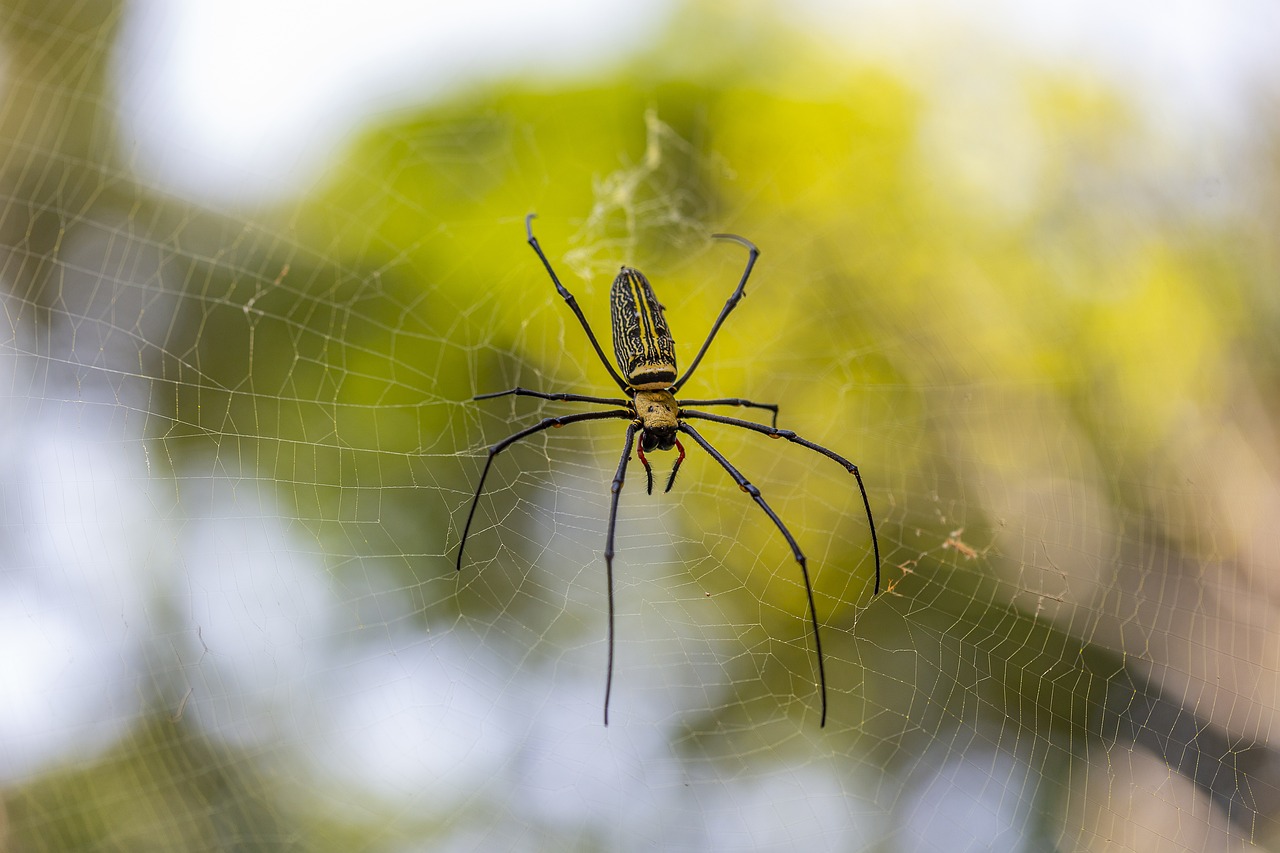The Giant Wood Spider (Nephila maculata), also known as the Golden Silk Orb-Weaver, is a fascinating and large spider species known for its impressive webs and striking appearance. Here’s an in-depth look at this captivating arachnid:
Description
- Size: Females are significantly larger than males, with body lengths ranging from 30 to 50 millimeters. Males are much smaller, typically around 5 to 6 millimeters.
- Appearance:
- Body: The female’s body is elongated and robust, often displaying vibrant colors such as yellow, black, and white. The abdomen may have intricate patterns.
- Legs: Females have long, slender legs that can span up to 150 millimeters. The legs are usually black with bright yellow bands.
- Males: Males are smaller, less colorful, and less conspicuous, often brown or dull in color.
Web
- Structure: Nephila maculata is renowned for weaving large, intricate orb webs that can span several meters in diameter. The webs are incredibly strong and can capture large prey.
- Silk: The silk produced by this spider has a golden sheen, particularly noticeable in sunlight. This golden silk is highly durable and elastic.
Habitat
- Distribution: The Giant Wood Spider is found throughout tropical and subtropical regions of Asia, from India and Sri Lanka to Japan, Indonesia, and northern Australia.
- Preferred Environment: They thrive in forested areas, gardens, and shrublands, often constructing their webs in open spaces between trees or large plants.
Behavior and Ecology
- Diet:
- Prey: They primarily feed on flying insects such as flies, moths, bees, and even small birds or bats that get ensnared in their strong webs.
- Hunting: They wait for prey to become trapped in their web and then immobilize it with venom before consumption.
- Reproduction:
- Mating: Males approach females cautiously to avoid being eaten. After mating, females lay eggs in a silk sac which is attached to foliage.
- Lifecycle: Spiderlings hatch from the eggs and initially stay in a communal web before dispersing to build their own webs.
Interesting Facts
- Web Strength: The silk of Nephila maculata is one of the strongest natural fibers known, comparable to synthetic materials like Kevlar.
- Human Interaction: Despite their intimidating size and appearance, these spiders are not aggressive toward humans. Their venom is not harmful to humans, causing only mild irritation if bitten.
- Scientific Research: Their silk is studied for potential applications in materials science and biotechnology due to its unique properties.
Conservation Status
- Threats: Habitat loss and environmental changes can impact their populations, but they are not currently listed as threatened or endangered.
- Conservation Efforts: Preserving natural habitats and reducing pesticide use are important for maintaining healthy populations of these spiders.
Observing Nephila maculata
- Best Places: They are commonly found in tropical forests, gardens, and wooded areas. Look for their large, golden webs in open, sunlit spaces.
- Watching Tips: Early morning or late afternoon are good times to observe them when they are most active. Approach their webs slowly to avoid disturbing them.
The Giant Wood Spider (Nephila maculata) is a remarkable species that showcases the incredible diversity and complexity of the arachnid world. Its impressive size, beautiful web, and ecological role make it a subject of interest for both scientists and nature enthusiasts.
Visited 826 times, 4 visit(s) today
Views: 1278
Subscribe to the newsletter:
